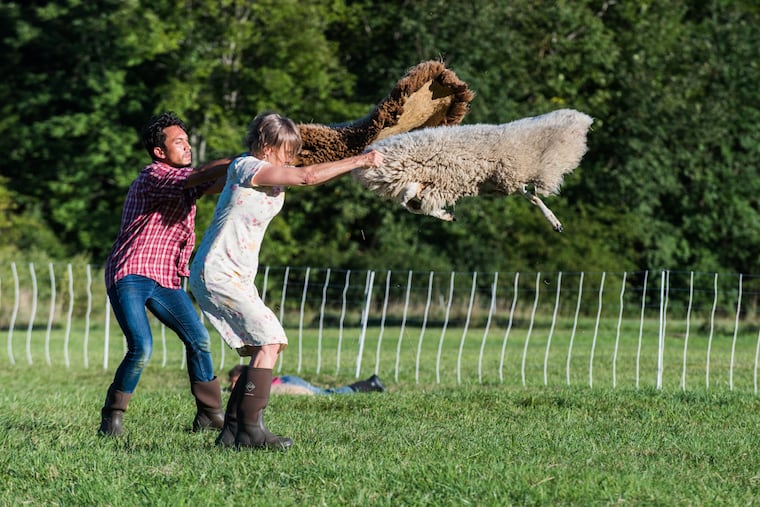‘Doggie Hamlet’: A baaa-llet where sheep are the stars
"There is nothing either good or bad," Hamlet said in the Shakespeare play, "but thinking makes it so." The same is true for "Doggie Hamlet," which debuted Sunday at the Belmont Plateau in Fairmont Park – as part of the Philadelphia International Festival of the Arts. An open mind is important, as "Doggie Hamlet" is not much as the name implies.

"There is nothing either good or bad," Hamlet said in Shakespeare's epic, "but thinking makes it so."
This is true for Doggie Hamlet, which debuted Sunday outdoors at the Belmont Plateau in Fairmont Park as part of the Philadelphia International Festival of the Arts.
An open mind is important, as Doggie Hamlet is not much as the name implies: It features more sheep than dogs. It is family-friendly but not aimed at children. It is not the story of Hamlet, but based loosely on the novel The Story of Edgar Sawtelle by David Wroblewski that in turn is based on both Hamlet and The Jungle Book.
There was some discussion last year whether Doggie Hamlet is art, and whether it deserves grant money that, in a roundabout way, came via the federally funded National Endowment for the Arts.
>> READ MORE: Taylor Mac outdoes Springsteen as hardest-working headliner, in audacious Merriam marathon
But it is definitely art, a sort of agrarian postmodern dance, more than some audience members expected. Choreographer Ann Carlson describes Doggie Hamlet in the program notes as a 3D pastoral poem that lives in a landscape painting. Thus, the sheep.
Audience members sit on bales of hale around a fenced-off field, with the Center City skyline in the distance. There is neither music nor narrative. The soundscape comes from a sheep herder's whistle and calls to three sheepdogs, many baaas, and much munching of grass, and traffic noises that invade the bucolic setting. More than a few audience members around me sneezed.
A cast of sturdy performers in work clothes range in age from a seventh grader to an older man and woman. They move together and help out when one falls ("to be or not to be?"). They skulk around in sheeps' clothing (like ghosts in the castle), looking more than a little creepy holding sheepskins above their heads with the living, breathing sheep running by.
They experiment with space, literally fencing themselves in. They address mutism and sign language (elements from Edgar Sawtelle and also, Carlson says in the program notes, from her own life).
The field is their large stage. The human performers may not be near you, the sun may get in your eyes, and it's easy to be distracted by the ovine splendor. One whistle or word from the sheep herder and a dog gets the whole flock running, prancing, sometimes even leaping in remarkably neat formations like a corps de baaa-llet.
The 70-minute show is something to behold. I saw it on a sunny, windy Sunday morning. Audience members wore boots and hats. It would've taken on new meaning in the gloom and rain later in the day, like one of those Harry Potter paintings where the subject reacts to the setting.
Indeed, more even than the typical dance performance, Doggie Hamlet is a new experience with every viewing. I would've enjoyed a second look. But the sheep were booked for only three shows.
"Brevity," as Polonius said in Hamlet, "is the soul of wit."
DANCE REVIEW
Doggie Hamlet
Sold out. Information: 215-893-1999, kimmelcenter.org